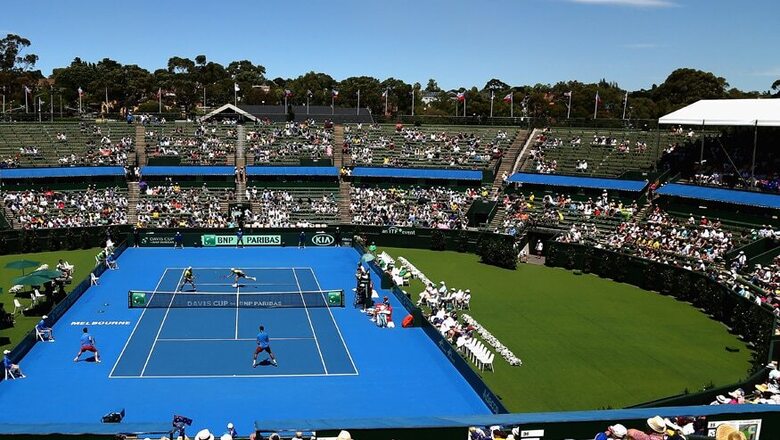
views
London: The plaque on the wall of Court 18 at Wimbledon bears the legend The Longest Match. The 2010 encounter between John Isner and Nicolas Mahut that it commemorates, lasting 11 hours and 5 minutes and spread over three days, has passed into tennis folklore.
But in an age of punditry in 140 characters when many sports are looking for ways to tap into a younger fanbase, the future of five-set grand slam tennis - where four-hour matches are relatively common - is coming up for debate.
While there is no suggestion that the circuit's four slams are about to scrap the traditional format, tennis authorities are already trying out new ideas.
The board of governing body the International Tennis Federation wants to cut men's singles matches in the Davis Cup team competition to best-of-three sets, and members will be asked to approve the change in August.
November's Next Gen ATP Finals in Milan, the season-ending tournament for the rising talent in the men's game, will host best-of-five matches. But sets will be first to four games rather than the usual six, with tiebreaks at 3-3, and there will be a sudden-death point at deuce.
"The sports and entertainment landscape is changing rapidly, as are the ways in which fans are consuming our sport," ATP Executive Chairman Chris Kermode said in May, announcing the innovations.
"This event is not only about the next generation of players, but also about the next generation of fans."
If the dozens of fans' comments on the ATP men's tour website were anything to go by, the plans were far from popular.
They ranged from "Worst. Decision. Ever" to "Totally insane. All designed for corporates ... and TV advertising."
SOCIAL MEDIA
Broadcasters, for their part, stress their flexibility and commitment to showing entertaining matches, regardless of duration, in the knowledge that when they win rights to show tournaments, there are no end-times for the on-court tussles.
"We're of the opinion that if a match goes to five sets then it is already a very, very good match. The longer the match goes on then viewers will want to watch for longer themselves – which, as a broadcaster, is obviously a good result for us," said Peter Hutton, CEO of Eurosport, which will broadcast Wimbledon across Europe.
Indeed, while fans of individual players might hope for a straight sets demolition job, the showdowns that make up the oft-debated lists of best matches are the marathons, when momentum whipsaws and the rivalry can become gladiatorial.
When Rafa Nadal stole Roger Federer’s Wimbledon crown in the fading light in 2008; when Bjorn Borg defeated John McEnroe in 1980; when wildcard Goran Ivanisevic beat Pat Rafter in a boisterous rain-delayed "People's Monday" final in 2001 – on each occasion the crowd was treated to five rollercoaster sets.
With key points and hotshots now increasingly being shown online in brief clips, the reach of social media may even enhance the popularity of such epics beyond tennis purists as hashtags and trends flash around the world.
A blog by Twitter about the Australian Open in January - set alight by title-winning victories by Federer in five sets over Nadal and Serena Williams over sister Venus - said tweets from the official @AustralianOpen account were seen 190 million times and the videos it tweeted were viewed 9.5 million times.
Whether any TV viewers stayed glued to every point of Isner's 6-4 3-6 6-7(7) 7-6(3) 70-68 win over Mahut back in 2010 is doubtful. The final set alone lasted 8 hours 11 minutes.
But it broke so many records that it has become part of the Wimbledon fabric - and these days the twittersphere would be abuzz with #longestmatch.


















Comments
0 comment